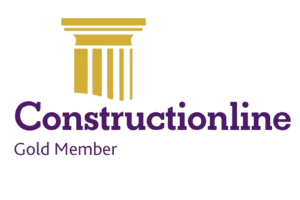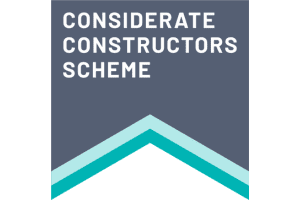Building a home extension involves strategic planning and understanding local regulations. To advance your project smoothly, start by evaluating your specific needs, ideas, and the overall height and layout of the planned structure. It’s important to be aware of local rules and to talk to professionals or even those with first hand experience to gain valuable insights.
Secure planning permissions as required and consult with experts about materials, fixtures, and costs. Make sure the right equipment is available and consider how plumbing and electrical systems will integrate with your extension. Ensuring compliance with building regulations and considering neighborly impacts are essential, and don’t forget to sign any necessary documentation with your contractors.
Thoughtful design choices can maximize the utility and aesthetic appeal of your new space, improving your life today and into the future. Finally, remember that further details can provide deeper insights into optimizing this exciting home improvement project.
What is a Home Extension, and Why Consider One?
A home extension involves expanding the current structure of a house to create additional space. These additions can greatly increase a property’s market value and enhance its functionality. In most cases, the benefit of a well-planned extension is seen in both improved living space and increased resale potential.
Various extension options for existing houses are available, ranging from simple conservatories to complex multi-story expansions. It’s wise to gather inspiration and carefully plan the route of your renovation to ensure a smooth flow between old and new areas.
When taking place, extensions can sometimes block light or views for neighbours, so communication is key to managing expectations. Be prepared with the right tools, permits, and timelines so you can expect a positive end result. Always speak with professionals to understand the process and avoid common pitfalls.
Understanding the Basics of a House Extension
To maximize living space without relocating, many homeowners opt for a house extension—whether it’s putting up a garage, a structural addition to a side extension of an existing building, or a detached house that expands its footprint.
This home extension can offer the extra space needed for a growing family or new functionalities for an existing house, like a dining room, home office, or gym. In many cases, such extensions include significant alterations to the roof, glazing, or framework to create a seamless integration with the main property.
Initiating an extension project involves several key steps, including obtaining planning permission from the local planning authority, which guarantees that the building work complies with specific building regulations. If you’re wondering whether an extension is right for you, a solid brief and thorough installation plan can help you avoid mistakes.
Extension costs vary widely based on the size, width, and depth of the build. However, investing in a detailed plan can help manage these expenses effectively. Proper drainage, weather protection, and compliance with the highest part of the structure’s guidelines must be factored in to avoid going wrong.
Homeowners must also consider how the extension will integrate with the existing house to maintain structural integrity and aesthetic coherence. From decoration and brick matching to the smooth flow of interior space, careful undertaking of the project makes all the difference.
There are other ways to expand your space, but a well-planned extension often proves the most efficient. Always stick to your plans, work with professionals, and develop realistic timelines to ensure success.
How a Home Extension Can Add Value to Your Home
While many homeowners primarily consider home extensions as a means to increase living space, these additions can also greatly enhance the market value of a property. A well-planned building extension to house, when executed as part of a thorough guide to building an extension, can offer a substantial return on investment by expanding the usable living space. This process not only caters to the need for new space but also aligns with strategic extension planning to maximize the value of your home. Understanding the full extension planning process and managing home extension costs effectively are pivotal in guaranteeing the new addition complements the existing structure and market demands.
Homeowners across the UK are increasingly keen to invest in such projects, especially when they hope to avoid moving house. It’s a good idea to begin with a clear scheme that accounts for personal preferences, the minimum requirements under building regulations, and potential disruption during construction.
When properly modified, an extension can enable new functionalities like installing a home office, gym, or additional bedroom, depending on how much you’re willing to spend. Never assume the design will work without professional input—it’s crucial to secure warranties and ensure every step meets quality standards.
| Factor | Impact on Value |
| Additional Space | Increases Usability |
| Modern Features | Attracts Buyers |
| Quality of Build | Guarantees Durability |
| Design Integration | Enhances Aesthetics |
Different Types of Extensions You Can Build
A single storey extension typically adds a room on the ground level, while a double storey extension expands both an existing floor and adds an upper level. The majority of these projects require careful preparation and solid groundwork before construction can begin to avoid potential damage to the existing property.
Both the existing property types may fall under permitted development, avoiding the need for planning permission, though building regulations approval is necessary to guarantee safety and compliance. However, in restricted areas such as conservation zones or for listed buildings, additional approvals may be required.
Loft and basement extensions maximize the existing space within a home’s footprint, which is ideal for urban areas where expanding outward isn’t feasible. When space is split between levels or areas, it’s important to ensure that the layout still meets your aim and functional needs inside the home.
Side and rear extensions extend the home’s boundaries sideways or toward the side extension of the backyard, respectively. A wraparound extension including both side and rear expansion can be a powerful combination that significantly increases usable space. However, be prepared to negotiate with neighbours if the plan causes any concerns, particularly if shared walls or boundaries are involved, to avoid disputes.
Obtaining planning permission is sometimes required, and while it may be granted quickly, trouble can arise if there’s any doubt about regulations or boundaries. Consulting a professional early can help appoint the right team and prevent the process from going slow.
To enhance the overall appearance, modern materials and finishes can be used, and integrating high-efficiency appliances is increasingly popular to improve energy use. Whether the goal is to pull off a sleek modern design or add character to a traditional home, understanding these extension types and their implications is key to a successful home transformation.
What is the Extension Building Process?
Effective management of key stages of the project is essential, as it coordinates tasks and timelines between homeowners and professionals. Giving attention to detail during these stages increases the chance of a smoother, faster build.
Engaging with a skilled building contractor is necessary to translate design plans into a functional and aesthetically pleasing space. You may need to make decisions on everything from kitchen layout and electrics to textures, switches, and pointers on lighting and finishing details.
It’s important to understand that some areas, such as sewers or shared walls, may need special permissions, which could affect privacy and timelines. This is particularly the case when coming close to neighbouring boundaries.
The fact that multiple people are involved—architects, contractors, engineers—means clear communication is important. You also need to make room for adjustments, so flexibility is key in responding to unexpected challenges.
Whether you’re switching layouts or updating finishes, staying involved throughout the process can help you get the results you desire and improve both function and comfort. From the initial ideas to the end result, each stage plays a crucial role in creating a successful home extension.
Step-by-Step Guide to Building a Home Extension
Initiating the construction of a home extension begins with thorough planning and understanding of the necessary steps.
The house extension project demands a careful selection of building materials and a detailed planning process. Key professionals, such as structural engineers and an architectural technologist, play vital roles in creating accurate and detailed drawings necessary for effective project management. Their input ensures a smooth transition from design to reality.
- Consultation with Professionals: Engage with architects and engineers to help you choose the right one for your specific needs and circumstances.
- Obtaining Permissions: Secure approvals from building control before digging foundations or adjusting the ridge of your roof.
- Sourcing Materials: Choose appropriate building materials, whether you’re replacing old components or selecting lead flashing for roofing. Quality materials reduce future maintenance and ensure durability.
- Execution of Plans: Begin construction work based on the drawings. This stage includes wiring, remodelling, and coordinating subcontractors for specialised tasks like plumbing and electrical.
- Monitoring Progress: Regularly assess the development to inspect compliance and guarantee adherence to plans. You may need to arrange for scaffolding or make arrangements for deliveries and work zones.
Other essential aspects include managing responsibilities between contractors, delivering materials on time, and ensuring the entire process is seamless.
If funding is tight, some homeowners borrow to cover costs or look for cheaper alternatives without compromising safety and function. Always object constructively if decisions or changes deviate from agreed terms. Each step is designed to guarantee the building project meets both legal standards and personal expectations.
Managing Your Extension Project Effectively
Managing a home extension project effectively requires a strategic approach that encompasses several essential activities. Hiring a professional project manager—with proven qualifications and tender experience—can streamline the process, ensuring that every phase of the home improvement project adheres to the required standards and runs on schedule. This not only makes the overall experience more comfortable for homeowners but also helps keep the project easy to oversee.
This includes submitting a building notice and ensuring that the design complies with building regulations. A project manager will also ascertain whether extensions require planning permission from the local authority—a vital step that varies based on the existing structure’s specifications, height, and the project’s scope. They often work hand in hand with other experts to verify general compliance, and they are careful not to withhold any critical information for any reason related to safety or legal matters.
Throughout the project, the manager’s role is to coordinate each detail meticulously—from compliance checks to timely execution—and to manage the overall timescale in order to safeguard the homeowner’s interests. With similar projects completed successfully in the past, they can provide valuable recommendations and pointers on potential challenges, such as moving critical utilities like electricity and sewerage to accommodate new layouts. This proactive approach ensures that things like appliances, fixtures, and plumbing are integrated without disruption, keeping the project on track and running smoothly on the road to completion.
By considering all these factors and offering clear recommendations based on first hand experience, project managers help ensure that homeowners feel happy and secure with the result. This extension not only meets legal requirements and personal expectations but also enhances the overall value and functionality of their current home. These common ideas and thoughts are shared as great advice for anyone looking to undertake a home extension project, making it a worthwhile investment for the future.
Working with Contractors and Builders
Effective collaboration with experienced professionals can mitigate the risks and control the cost of a home extension. For homeowners in London, where space and planning constraints may be slightly more complex, this step is even more critical.
Key considerations include:
- Experience with Types of Home Extensions: Different designs and structures require specific expertise. A builder who previous clients have referred can often provide valuable proof of quality and satisfaction.
- Understanding of Local Regulations: Compliance with building codes guarantees project legality. Be sure to discuss any potential limitations or adjustments, especially if the property is leasehold or within a conservation area.
- Cost Transparency: Understanding what the extension will cost upfront avoids surprises. It’s wise to prefer teams that offer clear breakdowns of labour, materials, and timelines—this can help reduce future hassle.
- Site Access Management: Guarantees timely and safe project execution. Complications can happen when drains or existing structures restrict access, so clear communication from the outset is key.
- Insurance and Liability: Confirm that your existing insurance provider covers the construction phase. Request written assurance from both your provider and your contractors regarding insulated materials, structural guarantees, and weatherproofing.
You may also wish to lay down specific terms in a written agreement to avoid future misunderstandings. Contractors should be willing to compromise when needed and offer design alternatives that remain desirable yet practical.
Finally, don’t forget to gain a glimpse of past projects—this can inspire confidence and help determine if their work aligns with your vision. Whether you proceed with a well-established company or, alternatively, a smaller team, ensure communication is open, realistic, and helpful at every stage.
How to Start Planning a Home Extension?
When planning a home extension, it’s a good option to outline each step carefully. Consider the nature and length of the project to embark on work with a clear plan.
Focus on the connection between the new space and existing structure, matching windows, doors, tiling, and eaves for an attractive finish. Check your plot for issues like flooding or underground network pipes to avoid costly repairs.
To maximise space and flow, work with professionals, preferably from a reputable federation. Financing through a loan is common, but keep your maximum budget in mind and maintain a good relationship with contractors and lenders.
Remember, an extension doesn’t necessarily have to be large to be effective. Avoid rushing—break the project into phases and plan. Also, ensure your current policy covers the work and any unexpected event. By following these steps, you’ll be ahead in managing your home extension project smoothly and successfully.
Steps to Plan Your Home Extension Project
Planning a home extension begins with a clear understanding of your objectives and needs. It’s a fantastic way to improve your living space and increase property value. Start by assessing the feasibility of integrating the first floor or other types of extensions like wraparound house extension, porch extensions, or basement conversions with your existing home.
This essential guide covers key steps in the house extension process:
- Assess costs with builders and local estate agents to create accurate home extension plans.
- Understand whether planning permission is required or if your project qualifies under permitted development, especially for semi or terraced house types.
- Review building regulations to ensure compliance.
- Check if a party wall agreement is necessary with neighbors.
- Seek prior approval for certain works even under permitted development.
Considering house extension ideas, such as an open plan kitchen or increasing the extension’s floor area, can make your home a better place. Thoughtful landscaping is also a great option to complete the overall design. Following these steps gives you the best chance of a smooth and successful extension project.
Key Considerations for Designing an Extension
When determining the floor area, consider how much space you want without exceeding the rear boundary of your property. Maximizing natural light is important, especially for single-storey or larger projects.
It’s crucial to start construction only after your architectural plans are approved and you’ve ensured compliance with building regulations. If your extension affects a shared wall, you may need to claim a party wall agreement.
Working with specialists and a knowledgeable founder can help you find the right solutions and provide confidence in your project. While some delays are unavoidable, having accurate figures and a clear plan is just one way to stay on track. You always need to make sure your design meets both legal and practical requirements for a successful home expansion.
What are the Costs Involved in Building a House Extension?
Understanding the rising costs involved in building a house extension is vital for effective planning and execution. The total expense can vary greatly depending on several factors, including materials, labor, design options, and the scope of the project.
Homeowners should consider not only the main build costs but also expenses related to finishing touches such as decorating and furniture to ensure the extension complements the current home. It’s advisable to work with a reliable contract to clearly outline the specific requirements and payment terms, so you know exactly when to pay and what is expected at each stage.
Location and the size of the extension can significantly affect costs, sometimes accounting for half of the overall budget. Excavation and groundwork can be particularly costly and often take longer than expected, so having a contingency fund is essential to cover unforeseen expenses.
Working with surveyors and trusted professionals can help you avoid costly mistakes, but you should also be liable for meeting deadlines to prevent losing money or premiums on insurance. Some freehold properties may bring additional considerations affecting cost and timeline.
In commonly unpredictable projects, it’s easy to be surprised by extra expenses, so understanding what your project is likely to cost and how long it will take to build helps you bring your plans to life in a cost-effective way. Over the years, savings in planning and execution can prevent losing thousands to delays or expensive alterations, making your home extension a wise investment rather than a dead financial burden.
Estimating the House Extension Cost
Estimating the cost of a house extension requires considering various factors that influence the overall expenses. Whether you’re adding to the rear of your home, perhaps extending by around six metres, or utilising land around the original house, the financial outlay can vary markedly.
This guide to building an extension on a house serves as the ultimate beginner’s guide to understanding these costs:
- Material Costs: Prices for concrete, wood, glass, and doors.
- Labor Costs: Fees for builders, electricians, and plumbers.
- Design Fees: Costs for architects or designers.
- Legal Fees: Expenses for permits and building regulations set by local authorities.
- Additional Costs: Potential landscape changes, utility adjustments, or other factors causing delays.
It’s important to bear in mind that standard home insurance policies may need updating to cover the construction phase and the completed extension. Reviewing your current policy before you start building ensures you have adequate protection throughout the project.
Use this as a rough guide to help you decide how much money to allocate to each stage of your extension. Each component plays its part and has a vital role in the total investment for your new extension.
Factors That Affect the Cost of an Extension
The type of house—whether it’s a semi, terraced, or detached house—impacts the complexity and cost. A two-story extension often requires a higher budget compared to a single-story extension due to additional structural support, new openings, and materials such as floor screed and reinforced foundations.
The need for planning permission and the potential involvement of the local water authority can introduce extra fees and delays. Ridge heights, windows, doors, and other structural elements can also affect the overall budget, especially if structural defects are uncovered.
In addition, the intended use of the loft extension itself—whether for a full loft conversion or other purposes—affects design considerations and costs. Your furniture choices and layout plans should be taken into account early to avoid later adjustments.
It’s worth noting the importance of having a contingency budget to handle unexpected issues that may arise during construction. To get a clear picture of your total costs and project scope, it’s vital to hire professionals who can offer expert advice. The right professionals will ensure that all aspects of a new build extension are considered, from square footage calculations to final finishes.
Budgeting for Your Home Extension Project
Before initiating a home extension project, it is essential to establish a clear and well-defined budget to cover all anticipated costs.
An extension is a popular way to add space and value to your home. Knowing the costs involved can help determine if an extension could be the answer to your needs, whether you’re adding an extra bedroom or enhancing contemporary design features.
- Planning and Permits: Costs vary, especially with or without the need for planning permissions, particularly if your property lies within a conservation area or if the extension affects a neighbour’s property.
- Construction Materials: Expenses depend on the quality and type of materials used, as well as additional requirements like damp proof measures and reaching the watertight stage.
- Design and Architecture: Fees for professional services to guarantee the extension blends with the back of the house, matches the ceiling height, and aligns with the wall of the original house. Structural changes, new foundations, and external works can all impact overall costs.
To future proof your investment, consider important aspects such as energy efficiency, smart light fixtures, and keeping everything on the same level if accessibility is a concern. Finally, ensure you are working closely with the right team to stay on budget and schedule. A comprehensive guide or professional consultation can help streamline your planning process.
Do You Need Planning Permission and Building Regulations?
When planning a home extension, obtaining planning permission and meeting building regulations are vital steps.
Understanding the specifics of planning permission is fundamental before initiating construction to guarantee legal compliance.
Additionally, homeowners must familiarize themselves with the building regulations that pertain to their project and understand the process of submitting a planning application.
Understanding Planning Permission for Extensions
Understanding whether planning permission and adherence to building regulations are necessary for your home extension is an essential first step in the construction process. Here are the key points to take into account:
- Planning Permission: Generally required if you intend to extend the house by more than three metres or build higher than the existing house.
- Listed Building Consent: If you own a listed building, you will need to obtain listed building consent, which is pivotal in protecting historical structures.
- Size and Scale: Limits on dimensions guarantee the extension does not overpower the original house.
- Neighbors: Informing neighbors can preempt objections and support your application.
- Professional Advice: Consulting with an architect or planner can help navigate the complexities of planning permissions.
Complying with Building Regulations
While securing planning permission is essential for legal compliance, adhering to building regulations is equally imperative to confirm the safety, health, and efficiency of your home extension.
Building regulations cover a wide range of criteria, including structural integrity, fire safety, energy efficiency, and accessibility. These standards confirm that any construction work, from external walls to plumbing systems and other structural elements, is carried out to a high standard and is safe for all occupants.
Even if your semi-detached house extension falls under permitted development rights and does not require the local planning authority’s approval, you must still comply with building regulations.
During the design process, it is vital to conduct a thorough site survey and review existing foundations to avoid issues later. Consulting your local building control office early helps verify that all necessary standards are met and approved before construction begins. This is especially crucial even for smaller projects aiming to create an aesthetically pleasing extension.
Ensure your home insurance covers the renovation and that contractors carry public liability insurance to protect against accidents. Planning for potential legal expenses adds an extra layer of security. Choosing a contractor with a proven track record guarantees smoother execution and compliance.
How to Apply for a Planning Application
After ensuring compliance with building regulations, the next step in your home extension project involves applying for a planning application.
Whether or not you need planning permission depends on the scale and scope of your project. Here are key considerations:
- Research Local Requirements: Different areas have unique planning rules, and what’s acceptable in one location might not be in another. This is particularly true for complex projects or extensions that include open plan layouts or impact local plants or ecosystems.
- Consult Professionals: Architects or planners can advise you on whether your project meets certain criteria and help you navigate planning permission efficiently.
- Prepare Necessary Documents: Include site plans, blueprints, and a detailed project description. Ensure everything is applicable to local codes and guidelines.
- Submit Application: This can typically be done online through your local council’s website. Don’t hesitate to connect with or contact the planning office for clarification or support.
- Track and Respond: Stay informed about your application status and be ready to provide additional details if requested. Being responsive and carefully reviewing feedback can help streamline your path to planning approval.
In some cases, if standard permissions are denied, exploring an alternative design or layout could offer the perfect solution. Paying attention to detail during this phase is key to a successful and timely project.
How to Make the Most of Your New Extension?
Implementing design tips can transform the space into a functional and stylish area, whether by improving ventilation, adjusting ceilings to enhance the feeling of openness, or choosing fittings that suit the shape and purpose of the room. This is particularly important in bathrooms, where moisture control and practical fittings are essential.
Exploring different options for lighting and layout from the outset can create a space that not only reflects personal taste but also meets practical needs. Seeking advice from tradespeople or friends with renovation experience can provide useful knowledge to ease concerns.
Smart home improvements, such as automated lighting or heating systems, ideally add long-term value and appeal to more people, especially when selling.
Homeowners should also consider funding and finance early on, as understanding the extent of expenses allows better planning. To oversee the project efficiently, it makes sense to stay involved throughout or hire a project manager.
Ultimately, the best way to ensure lasting value is to remain proactive in maintenance and thoughtful with any upgrades, keeping the rest of the home and future goals in mind.
Design Tips for a Functional and Stylish Extension
When planning a home extension, it is essential to integrate both functionality and style to guarantee the space is not only visually appealing but also highly practical.
Achieving this balance involves careful consideration of design elements that enhance both the utility and aesthetics of the new space. Here are some key tips:
Maximize Natural Light: Incorporate large windows or skylights to brighten the space naturally—especially useful in a one storey extension where vertical light entry is optimal.
- Flexible Layouts: Design adaptable spaces that can evolve with your changing needs, making the most of the available space and anticipating future interior work.
- Cohesive Aesthetics: Ascertain that the extension complements the existing home’s architectural style and suits the character of the local area to ensure harmony.
- Smart Storage Solutions: Include built-in cabinets or shelves to reduce clutter and support efficient interior design.
- Durable Materials: Choose materials that are both stylish and capable of withstanding daily use, especially in areas with underfloor heating or variable floor levels.
Before work begins, have your plans drawn professionally to align with the chosen extension type. Collaborate closely with your main contractor to ensure the project stays within budget and on schedule, accounting for unforeseen expenses in case the worst happens. This way, you’ll enjoy more space that’s both beautiful and functional.
Adding Value with Smart Home Improvements
Incorporating smart home technologies can greatly increase the value of a home extension. Modern buyers often prioritize homes that offer automation in lighting, heating, and security systems, which can all be controlled via smartphones or other devices.
Integrating such tech into an extension not only modernizes it but also enhances daily living convenience. For instance, smart thermostats adjust the temperature based on daily routines, while automated lighting systems save energy by adjusting based on time of day or occupancy. When laying flooring or installing bathroom fittings, integrating compatible smart systems from the outset makes sense for long-term functionality.
Self builders working with an experienced architect or a good builder can incorporate smart tech into their plans from the beginning, even on a tight budget. Ensuring compatibility with the original building and current space is key, particularly when extension work involves proximity to neighbouring buildings. Factoring in professional fees and setting a clear completion date before work begins will help keep the project smooth and efficient.
Long-Term Maintenance Tips for Your Extension
After enhancing your home with smart technologies, maintaining the new living space effectively guarantees that it remains functional and valuable over time.
To promote longevity and performance, homeowners should consider the following strategies:
- Regular Inspections: Schedule annual checks to identify and address any structural issues or wear and tear, especially in more complex projects like a side two storey extension with a flat roof. Being familiar with common problems allows you to act confidently and move forward without delays.
- Quality Cleaning: Clean both interior and exterior areas routinely to prevent the accumulation of dirt and debris, including around garden space and outdoor zones connected to the extension ideas. Use the right cleaning colours and materials to avoid damage, particularly near sockets and radiators.
- System Updates: Keep all technological systems updated to promote peak functionality and security, particularly in spaces designed as extra living space. Learn how to maintain these systems or hire qualified tradespeople to handle updates easily and fully.
- Weatherproofing: Check and maintain insulation and weather seals to protect against environmental elements and ensure durability in your proposed project. Simply ignoring signs of wear can lead to major issues down the line.
- Professional Consultations: Engage with a reputable building company for complex maintenance needs, promoting expert care and preservation of the extension’s value. This is opposed to trying DIY fixes that might lead to refusal of future planning if incorrectly done.
Conclusion
In summary, building a house extension and renovation project involves careful planning, understanding of construction costs, and compliance with legal requirements. By meticulously planning the design, especially when working with existing rooms or an existing roof, and considering the financial implications, homeowners can effectively enhance their living space and even save money.
Securing the necessary permissions guarantees that the extension is legally compliant and structurally sound, especially in cases where existing shallow foundations are involved. Choosing to project manage your extension, or working with master builders or a reputable build and design company, ensures the process runs smoothly and efficiently.
Ultimately, a well-executed home extension—notably a loft conversion or rear addition—not only increases the functionality of a home but also potentially raises its market value. For more advice on how to build a house extension, including planning and budgeting, consult with experts who can guide you through the process efficiently and within budget.















